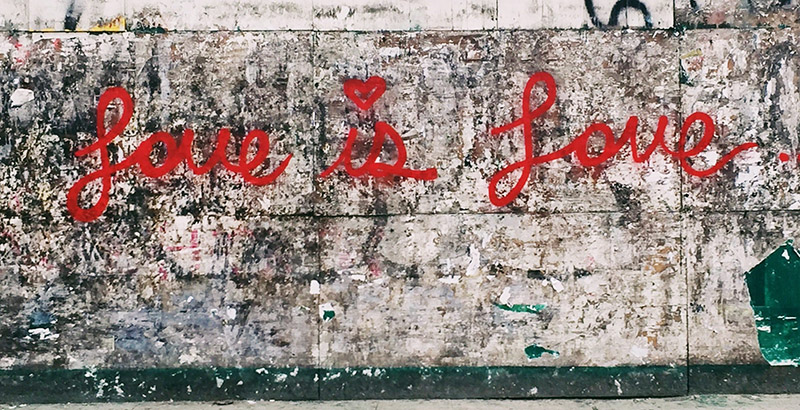- The Meaning of Critical Thinking: A Key Skill for Navigating Today’s Information Landscape - November 3, 2025
- Grandparents Can Develop Activist Grandchildren - September 29, 2025
- Top Six Reasons Credit Union Benefits Are a Smart Choice Over Banks - August 18, 2025
In this post, learn how social movements tackle the most significant worldly problems and how you can be a part of making a difference for the cause closest to your heart and another brick in the wall of social justice.
How Social Movements Tackle Today’s Most Pressing Worldly Problems
Our challenges are no longer confined to what is happening in our community. An example is climate change, which impacts all of us and requires a worldwide effort to address it effectively.
One person alone may feel unable to make much of a difference. Do you sometimes feel like your contribution to activism is meager? It’s not.
That is where social movements come in. Because a social movement is made of people like you working for change. Every bit of activism helps support your cause. With each person doing their part, we create a better world.
How Do Social Movements Work?
A social movement is a group of people working to change society for the better. Many social movements are decades in the making.
For example, enslaved people were freed in 1863. But the work started long before that. And after the Emancipation Proclamation, the fight was not over. Sadly, there is still systemic racism in our society. So, many people are continuing to add a brick in the wall of racial justice.

Another example is marriage equality. Many people worked in various forms to bring attention to this cause starting in the 1970’s. Before the 2015 Supreme Court decision legalizing same-sex marriage it was legal in some states, with a hodgepodge of rules about issuing and acceptance of licenses.
An example of a cause that failed was the effort to pass the Equal Rights Amendment. Pro-ERA activists were successful in getting 34 states to ratify it. However, the actions of Phyllis Schlafly and the STOP ERA movement sowed doubt about the impact of the amendment on women, citing possible effects such as decriminalization of rape and the potential of the military draft. The amendment was not passed. Interestingly, women are revitalizing the ERA movement.
How are Social Movements Created?
Social movements can vary in the time it takes to reach a particular goal, as evidenced by the examples in the previous section. Why? Because social movements need many people with a common goal and capabilities to make a difference.
Johnathan Christianson labels social movement stages as social ferment, popular excitement, formalization, and institutionalization. First, many people experience or recognize the problems (social ferment). This leads to sharing the possible changes (popular excitement.) Then, organization and coalition building advance the cause (formalization), and the resulting change becomes a part of society (institutionalization.)
Successful movements follow these four stages, which may take decades.
“Social change is pretty unique to humans. Due to our biology and ability to adapt, learn, and be flexible — especially as our environment changes around us—we are able to continuously inspire social change, even if we initially cause it. Hence, the changing social order.” University of the People
One person can inspire a social movement but cannot make a social movement succeed alone. For example, Judy Heumann inspired the disability activism movement.
Bryan Stevenson inspired activism for wrongly incarcerated people of color.
But they had help from many others. Every cause has a variety of social movements. Within the cause and social movements are many groups working toward aspects of the issue.
[You may also enjoy How To Make Impact With Your Activism.]
Your Brick in the Wall of a Social Movement
My book, The Happy Activist, provides a 5-step path to effective activism. Enjoy activism that taps your unique talents and makes a difference for the cause closest to your heart. On the 5-step Activism Path, you check your impact. That means choosing the activism opportunity that makes the most change for your cause. But that does not mean saving the whole world.
Instead of being overwhelmed by the sheer number of problems, you can channel your energy into action that aligns with your passion. You can most effectively create impactful change by focusing on the cause closest to your heart.
For example, Ted, who advocates for those with mental illness, started a support group at the middle school. He hopes it becomes a model the entire school system can use. It would have been overwhelming and impossible if Ted wanted to help every middle schooler in the world. But he is one individual in a larger social movement that supports those with a diagnosis.
Social Movements for Worldly Problems
Once you are clear about the cause closest to your heart and how you want to apply your skills, consider whether you want to be a solo activist or join an organization. Either way, you are a brick in the wall of the social movement.
In the following sections, browse examples of organizations you can explore within each cause.
Environmental Activism
One of the most urgent worldly problems we face is the environmental crisis. Environmental activism includes issues of climate change, toxic waste, and water pollution.
If environmental activism is the cause closest to your heart, you can make a difference in many ways. But choose an activism method that taps into your skills and motivates you.
Here are examples of organizations working on environmental issues:
- The School Strike for Climate Change is a global movement of students striking from school to demand government action to address the climate crisis. The movement was started by Greta Thunberg, a Swedish teenager vocal about the need for immediate action to address climate change.
- Mercy for Animals works to eliminate factory farming of animals, a huge contributor to climate change. Also, they promote animal welfare and reduce animal suffering.
- Extinction Rebellion is a global social movement demanding immediate action from governments to address the climate crisis and prevent mass extinction.
- The Sunrise Movement is a grassroots organization working to build a movement of young people demanding action from governments to address the climate crisis.
- Greenpeace is an international environmental organization that campaigns for a healthy planet, focusing on climate change, deforestation, pollution, and protecting oceans and biodiversity.
- 350.org is an environmental advocacy group fighting for climate solutions by pushing to keep fossil fuels in the ground and transition to renewable energy.
- Sierra Club is the oldest and largest grassroots environmental organization in the US. Their mission includes promoting the responsible use of the earth’s ecosystems and resources.
Peacebuilding Activism
Peacebuilding activism is vital in addressing a world rife with conflict. Worldly problems such as war, ethnic tensions, and religious extremism wreak havoc on communities, destabilizing regions, disrupting economies, and causing immense human suffering.
Peacebuilding activism includes levels from fostering inner peace to creating global peace institutions. Activists advocate for better ways to communicate, eliminate domestic violence, and support people fleeing from terrorism.
If peace is the cause closest to your heart, you can make a difference in many ways. But choose an activism method that taps into your skills and motivates you.
Here are examples of organizations working on peacebuilding:
- March for Our Lives is a student-led movement founded in response to the 2018 Stoneman Douglas High School shooting in Parkland, Florida. Their goals are to reduce gun violence and promote stricter gun control laws.
- Veterans for Peace consists of veterans and military families who are opposed to war and militarism.
- The American Humanist Association promotes secular humanism and advocates for the separation of church and state.
- The International Rescue Committee provides emergency relief, resettlement assistance, and advocacy for refugees and displaced persons.
- Moms Demand Action is a grassroots movement of Americans fighting for public safety measures that can protect people from gun violence.
[I’m excited to announce that Make a Difference with Peacebuilding Activism is in progress right now for publication in 2025!]
Racial Equality
Protecting human rights is critical for a just world. But worldly problems such as discrimination, oppression, and denial of fundamental freedoms continue to harm people. Human rights activism results in legal and policy changes and increased awareness about dismantling racism.
If racial equality is the cause closest to your heart, you can make a difference in many ways. But choose an activism method that taps into your skills and motivates you.
Here are examples of organizations working on racial equality:
-
- Black Lives Matter (BLM) advocates for the eradication of systemic racism and violence against Black people. BLM organizes protests, campaigns for policy change, and raises awareness of racial inequality.
- NAACP (National Association for the Advancement of Colored People) fights for civil rights and racial justice.
- Showing up for Racial Justice organizes white people to support racial equality.
- The Southern Poverty Law Center promotes racial justice and dismantles white supremacy. They also host the Civil Rights Memorial.
- The Equal Justice Initiative focuses on ending mass incarceration and excessive punishment in the US. Read about my visit to their Legacy Sites in Montgomery, Alabama, or watch the video below.
Feminism
Feminism seeks to promote gender equality and reproductive rights and fight worldly problems such as discrimination, sexism, and domestic violence.
If feminism is the cause closest to your heart, you can make a difference in many ways. But choose an activism method that taps into your skills and motivates you.
Here are examples of organizations working on gender issues:
- The #MeToo movement aims to raise awareness about sexual harassment and assault and to provide support to survivors.
- UN Women is a United Nations organization dedicated to gender equality and women’s empowerment.
- The Global Fund for Women advances women’s rights worldwide, providing resources for initiatives in sexual health, education, and political representation.
- The National Organization for Women (NOW) works for women’s equality.
- Planned Parenthood provides reproductive health care and education.
- Time’s Up combats sexual harassment and inequality in the workplace.
LGBTQIA+ Activism
LGBTQIA+ activism promotes the rights of lesbian, gay, bisexual, transgender, queer, intersex, and asexual individuals. The goals are to challenge discrimination, stigma, and marginalization faced by LGBTQIA+ individuals and promote equality, justice, and inclusivity. Some of the critical issues in LGBTQIA+ activism include marriage equality, anti-discrimination laws, healthcare access, education, and employment discrimination.
If LGBTQIA+ activism is the cause closest to your heart, you can make a difference in many ways. But choose an activism method that taps into your skills and motivates you.
Here are examples of organizations working on LGBTQIA+ issues:
- Human Rights Campaign (HRC) advocates for full equality and legal protections for the LGBTQ+ community.
- The Trevor Project focuses on suicide prevention and crisis intervention for LGBTQ+ youth.
- Parents, Families and Friends of Lesbians and Gays (PFLAG) supports, educates, and advocates for LGBTQ+ people and those who love them.
- The Gay, Lesbian & Straight Education Network (GLSEN) works to provide affirming learning environments for LGBTQ+ youth.
Consumer Activism
Consumer activism is a movement that seeks to promote consumer rights and economic justice. Areas of focus include fair business practices, product safety, environmental sustainability, labor rights, and data privacy. Consumer activism is also focused on worldly problems such as promoting sustainable consumption patterns, reducing waste, and promoting fair trade practices.
If consumer activism is the cause closest to your heart, you can make a difference in many ways. But choose an activism method that taps into your skills and motivates you.
Here are examples of organizations working on consumer issues:
- Oxfam works to end the injustice of poverty by addressing inequality and helping marginalized communities access fundamental rights like education, health care, and food security.
- Fairtrade International advocates for better trading conditions and ensuring farmers and workers in developing countries get fair prices, fair labor conditions, and sustainable livelihoods.
- The Economic Policy Institute (EPI) works to counter rising inequality, low wages and weak benefits for working people, slower economic growth, unacceptable employment conditions, and a widening racial wage gap.
- Fight for $15 advocates to raise the US minimum wage to $15 per hour.
- ONE is a global movement campaigning to end extreme poverty and preventable disease by 2030.
- Consumer Reports advocates for truth, transparency, and fairness in the marketplace.
Disability Activism
Disability activism seeks to promote the rights and inclusion of people with disabilities and reduce the impact of ableism. Key issues in disability activism include accessibility, inclusion, employment, education, and healthcare. Disability activist Judy Heumann was a part of the movement to get the Americans with Disabilities Act passed. Read her fascinating story or watch Crip Camp: A Disability Revolution, which highlights a summer camp that was a hotbed for disability activists.
If disability activism is the cause closest to your heart, you can make a difference in many ways. But choose an activism method that taps into your skills and motivates you.
Here are examples of organizations working on disability issues:
- The Disability Rights Education and Defense Fund (DREDF) advances the rights of people with disabilities through legal advocacy, policy reform, and education.
- The International Disability Alliance (IDA) promotes the rights of persons with disabilities and advocates for inclusion in international policies and development programs.
- The UD Project advocates for universal design, an approach that makes mobility easier for everyone.
- The Autism Self-Advocacy Network is run by autistic people and advocates for them. Key focus areas include disability rights, policy-making, self-advocacy, and changing the way people think about autism.
- One of the Activists in Action in The Happy Activist is Kristie Cabrera-Robledo whose Growing Food In This Body is a website dedicated to making natural spaces more accessible for those with a disability.
Mental Health Activism
Mental health activism promotes mental health awareness, reduces stigma, and advocates for resources for caregivers of those with a diagnosis. Advocates want mental health to have parity with physical health because mental illness is a physical illness.
If mental health activism is the cause closest to your heart, you can make a difference in many ways. But choose an activism method that taps into your skills and motivates you.
Here are examples of organizations working on mental health issues:
- The National Alliance on Mental Illness (NAMI) is an amazing grassroots organization that provides education, support, and advocacy for individuals and families affected by mental illness. <link> Read my review of the excellent NAMI resource You Are Not Alone.
- The Mental Health Association (MHA) focuses on mental health education, advocacy, and support services.
- To Write Love on Her Arms (TWLOHA) – TWLOHA is a non-profit organization focusing on mental health awareness, support, and advocacy, emphasizing the intersection of mental health and addiction.
- The American Foundation for Suicide Prevention (AFSP) advocates for understanding and preventing suicide and provides support and resources for those affected by suicide.
[Make a Difference with Mental Health Activism, my book with mental health activist, Trish Lockard, guides you down the 5-Step Activism Path. Learn how you can match your skills to an activism method you love, and make a difference for those with a diagnosis.]
Political Activism
Political activists fight against worldly problems such as discrimination, oppression, and inequality. They advocate for policy changes that challenge existing power structures. Critical political activism issues include voting rights, campaign finance reform, and economic justice.
If political activism is the cause closest to your heart, you can make a difference in many ways. But choose an activism method that taps into your skills and motivates you.
Here are examples of organizations working on political issues:
- Moveon.org advocates for healthcare, education, and economic justice issues.
- Indivisible focuses on issues such as healthcare, immigration, and climate change.
- The American Civil Liberties Union (ACLU) advocates for issues such as free speech, racial justice, and reproductive rights.
Health Equality
Health equality activism is a movement that challenges systemic barriers to healthcare access, particularly for marginalized communities. Worldly problems include health disparities such as racial and socioeconomic health inequities, access to healthcare and health insurance, infant mortality, maternal mortality, and chronic disease.
If health equality activism is the cause closest to your heart, you can make a difference in many ways. But choose an activism method that taps into your skills and motivates you.
Here are examples of organizations working on health equality issues:
- The National Minority AIDS Council (NMAC) focuses on issues like HIV/AIDS, healthcare access, and health disparities in minority communities.
- The National Council of La Raza (NCLR) focuses on healthcare access, immigration, and health disparities in Latino communities.
- The Asian & Pacific Islander American Health Forum focuses on healthcare access, mental health, and health disparities in Asian and Pacific Islander communities.
- The National Rural Health Association (NRHA) focuses on healthcare access, health disparities, and rural health.
- #ME Network works for patients with Myalgic encephalomyelitis (ME) or myalgic encephalomyelitis/chronic fatigue syndrome (ME/CFS.) Their vision includes awareness, support, and effective medical care.
Where Social Movements Meet: Intersectionality

It is important for you to understand the concept of intersectionality and how that may impact your efforts.
Intersectionality is a term that describes how individuals and groups experience oppression and discrimination in complex and interconnected ways. Different forms of oppression, such as racism, sexism, homophobia, transphobia, ableism, and classism, intersect and compound. These intersections create unique forms of marginalization and exclusion. Social justice movements must address marginalized groups’ specific experiences and needs.
But the good news is that intersectionality can create opportunities for coalition building. With help from other organizations the ability to challenge and dismantle power structures is easier. By acknowledging and addressing these intersections, social movements can build a more effective movement for solving worldly problems.
Be a Brick In The Wall of Your Social Movement
You can be part of a social movement to improve worldly problems. But, before you jump into activism, take time to be clear about the right opportunity for you.
You have many choices about where to start with your activism. Still, the right place for you best matches your passion, skills, knowledge, and motivation. With focus, you can evaluate what is suitable for you and, in turn, maximize the impact you can make.
Live your values. Make the world a better place.
The Happy Activist’s 5-Step Activism Path helps you find a sustainable, joyful way to engage and make change. It’s time to take that first step. What will yours be?
READ NEXT
If you are interested in browsing more social movement organizations that work on worldly problems, try this list of Progressive Organizations in the US with links to their websites.
How To Master Social Change Definitions: Try This Sure-Fire Guide
Here is another example of an activist checking their impact: How to Start in Activism: Are you Making an Impact?
How To Resolve Ethical Dilemmas in Work for the Greater Good
Learn more about Getting Started in Activism.
- Focus your passion and find the cause closest to your heart among the myriad of causes.
- Match your skills with the type of activism work that best suits you.
- Find an activism opportunity that works for your life.
- Determine if your social justice work truly makes an impact.
- Stay motivated in your activism for the long-term.
What Kind Of Social Change Agent Are You?
Learn How to Craft Excellent Social Change Education




Pingback: Monday InLinkz Join us at 170 Senior Salon
Pingback: What Is the Biggest Need in Activism? Administrative Work
Pingback: How To Be a Solo Activist